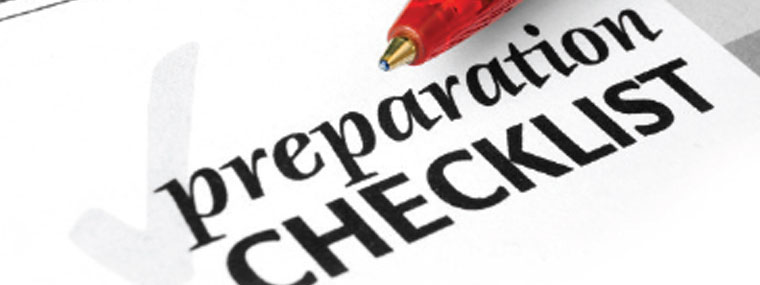
Annual Budget Preparation: Set Yourself Up for Success
by Adia Walker / Published July 2014
Some people love crunching numbers; others despise anything that even looks like it might involve math. And then, of course, there are the vast majority of us who fall somewhere in between: not afraid to pull out the calculator and tackle some tough figures but perhaps not as skilled as the expert accountant that you keep in your list of contacts for the occasional consult.
No matter which category you fall into, you should always look to the experts for tips and best practices when it comes to something as important as preparing an annual budget. By following a few simple guidelines and knowing where to go when you need help, you set yourself up for success.
To gather a few pearls of wisdom, we spoke with Christine Rand from Gonzalez and Company, CPA, as well as Chip Swinarski from Swinarski and Company, CPA. These two professionals have helped many community associations through the annual budget preparation process, and are glad to be able to share some of their lessons learned with the Florida Community Association Journal’s readers. The following tips are not in any particular order, but we hope they help make the budget preparation process as easy and painless as possible.
- Start the process early. Swinarski recommends starting at least three months prior to the completion deadline. “This gives you time to talk to key people about costs and expenses,” he says.
- Don’t rely on old numbers. “Make sure you use up-to-date cur-rent financials for projection purposes,” says Rand. “At least nine months into a year.”
- Give advance notice to those involved. “Plan ahead for your open board/committee meetings, and make sure you give everyone plenty of advance notice,” Swinarski says.
- Gather all your information and put it into a list. Rand recommends having a list of all current contracts as well as any increases that are expected so that you can budget accurately.
- Don’t lump everything together in one general section. “The budget should be divided into a non-restricted operating section and a restricted reserves section,” advises Swinarski.
- Pay attention to your reserves budget. “Reserves must be included in every budget whether the association waives reserves or not,” says Rand. “Make sure you have a reserve study or current estimates for replacement schedules to include the reserve breakdown.” Swinarski points out that some of the most common items that need to be included in a reserve budget include roofing, painting, and paving. “Also consider any other items with a replacement cost of more than $10,000,” he adds. “For most associations, you will need a member vote if you plan to reduce or waive reserves.”
- Clearly state the timeframe your budget covers. “A typical mistake is not putting the accounting period on the budget,” says Swinarski.
- Be realistic. “People need to keep a realistic approach when looking at the future expenses to cover the possible increases,” advises Rand.
- Use standardized terminology. “I suggest that the budget and financials have the same line items,” says Swinarski. “Don’t call it ‘utilities’ on one and ‘gas and electric’ on another. You should make them exactly the same so that they are easy to compare. The expenses in your financial statement and your budget should be exactly the same.”
- Include your stakeholders in key discussions. Rand recommends holding conversations with members of the finance committee as well as the board to gain valuable insight on any areas of concern they may have regarding financials and the budget.
- Explain your line items. Whether you include footnotes or provide explanation within the actual budget, Swinarski recommends making each and every line item crystal clear to anyone who might read the budget.
- Be familiar with the state requirements. Rand has witnessed some budgets gone bad simply because they didn’t meet state requirements. Doing the research before you start the process can save time and trouble in the long run.
- Know how to allocate costs. “Once you know how much it’s going to cost, you have to allocate the funds,” says Swinarski. “To complete assessments, you have to know how to allocate, taking into consideration the number of units, weighted for size, as well as the timeframe. Sometimes it is done for 12 months at a time and sometimes it will be on a quarterly basis.”
- Don’t overlook the obvious: double check your math.“A budget that does not balance is not correct,” says Rand. Swinarski agrees. “You have to double check the math and make sure it adds up,” he says.
- Consider the not-so obvious as well. “In recent years, we’ve had a lot of uncollectable fees due to the housing market,” begins Swinarski. “You may want to allocate for this in your budget. In addition, if you have loans, allocate for the principal and the interest.” Creating a balanced budget that fully addresses all the needs of your asso-ciation is no simple task and will require time and thought. Giving it the attention it needs from the very beginning can help avoid possible negative consequences, including:
- Compliance issues with state requirements
- Potential cash flow issues
- Resubmitting of an inaccurate budget
- Underfunding
- Special assessments
- Property not receiving the repairs it needs. Even if everything does not go as smoothly as you had hoped, allow the process to be a learning tool for you and your team.
- Start by learning from your financials to gain a realistic picture of your financial position.
- Identify possible shortfalls that have existed without your awareness, and take steps to increase the budget for these items.
- Look for any errors that may have occurred, such as the calculation of maintenance payments.
- Start a list of your own best practices.


